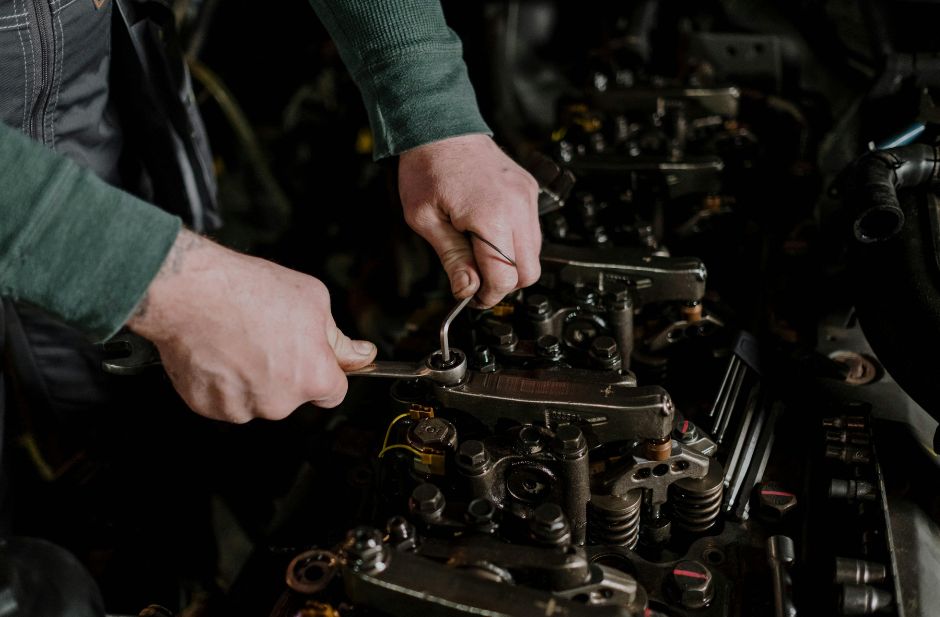Few things stress out a motorcycle owner quite like a blown head gasket. Seriously, it’s one of those problems you just… don’t want to deal with. Repairs are time-consuming, pricey, and, once the damage is done, there’s no way around it.
Whether you’re just keeping up with maintenance or trying to figure out accident claims involving motorcycles in Denver, knowing what kind of costs and downtime you’re looking at can save a lot of headaches.
What Does A Head Gasket Do?
The head gasket might look tiny, but it’s doing some heavy lifting in your engine. It seals the cylinder head to the engine block, keeping oil, coolant, and combustion gases from… well, mixing. Without it, performance tanks, and engine damage can happen fast.
Different Varieties Of Head Gaskets
With time, the basic design of the head gaskets remained mainly unchanged, advancing in materials and manufacturing processes that led to the creation of several different types of head gaskets.
When a gasket goes bad, fluids mix or leak, your engine overheats, and compression drops. That’s a fancy way of saying your bike might run rough—or not at all. And if you keep riding, you’re flirting with permanent engine damage.
Swapping out a head gasket isn’t like changing spark plugs. You’ve got to take apart a big chunk of the engine and then put it back together just right. That’s why it’s pricey and eats up a lot of time.
1. Multi-Layer Steel Gaskets
One of the most modern head gaskets is the multi-layer steel; it is a material that is ideally suited for the engines of high compression, such as diesel engines.
The gaskets have two to five layers of steel that are interspersed with an elastic compound, which enables them to withstand high compression and temperature.
2. Copper Gaskets
Copper used to be a go-to material for head gaskets for their superior durability and softness in texture, if compared with regular steel and aluminum.
As a cylinder head, it is tightened; copper is known to form a perfect seal between the block and the head, offering a reliable gasket. Copper continues to find use in high-performance applications in today’s world.
3. Composite Gaskets
Constructed mainly from asbestos or graphite, composite head gaskets do not offer the same durability as their copper or multi-layer steel counterparts. Additionally, the toxic nature of asbestos has led to the discontinuation of such parts.
Signs Of A Failing Head Gasket
Luckily, a failing head gasket usually gives you hints before the engine throws a full tantrum. White smoke from the exhaust? That’s often coolant sneaking into the combustion chamber. Milky or frothy oil? Yup, that’s coolant mixing with oil.
Other warning signs: your bike might overheat even if the coolant is topped up, lose power, misfire, or just be stubborn to start. Basically, if your bike’s acting weird, don’t ignore it—head gasket trouble could be lurking.
Catch it early, and you might avoid a full engine rebuild. Ignore it, and… well, your wallet will notice, for sure.
What Is The Average Repair Costs?
Replacing a motorcycle head gasket isn’t cheap. On average, you’re looking at $1,000 to $2,000, depending on the bike. Smaller, single-cylinder motorcycles? Usually cheaper. Fancy, multi-cylinder engines? Yep, brace yourself.
The gasket itself is fairly cheap—think $50 to $200—but labor eats up most of the cost. Mechanics have to remove the engine, check for warping, and then reassemble everything perfectly. It’s precise work, and that takes time.
If the cylinder head is warped or damaged from overheating, add machining or replacement on top of that, and suddenly your bill jumps a few hundred dollars more. High-performance bikes? Sometimes a full engine teardown and pressure test is needed, which… yeah, adds even more.
What Are The Factors That Influence Cost?
Several things affect how much you’ll end up paying. Engine complexity is a big one. Multi-cylinder bikes, liquid-cooled engines, or older tech can take longer to fix. Where you live matters, too—urban repair shops usually charge more per hour than a small-town garage.
The extent of the damage also plays a role. A simple gasket swap is cheap; a warped head or damaged pistons… not so much. And parts availability? If your bike is vintage or rare, tracking down the right pieces can take time and money.
Because of all this, getting a written estimate from a trusted mechanic before any work starts is just smart.
What Is The Downtime: How Long You’ll Be Without Your Bike?
How long you’re off the road depends on the job. Usually, expect two to five days. Simple fixes with parts on hand? Maybe a couple of days. More complicated repairs, or if the head needs machining? That can stretch to a week.
Sometimes, delays come from waiting for specialty parts—rare or vintage motorcycles, I’m looking at you. Your mechanic will also likely run compression and coolant flow tests after reassembly, which adds time but ensures you don’t have the same problem again.
How To Prevent Future Head Gasket Problems?
Prevention is way easier than repair. Most head gasket failures happen because of overheating, so keep your cooling system in shape. Change coolant as your manufacturer recommends, check levels often, and peek at hoses for wear.
If oil or coolant is low, don’t push your bike too hard. Overheating metal parts warp, and that’s a recipe for gasket failure. If you notice heat building up or pressure dropping, don’t put off checking it out.
Also, good fuel and oil matter. They seem like small things, but they can seriously affect how long your engine—and its gaskets—last.
Importance Of Head Gaskets
Replacing a head gasket isn’t cheap, no sugarcoating it. But knowing what to expect in terms of costs and downtime makes it a lot less stressful.
Spotting warning signs early and keeping your cooling system in check goes a long way toward preventing future headaches.
And if you’re dealing with motorcycle accident claims in Denver, understanding the repair realities can be just as important as any insurance coverage.















